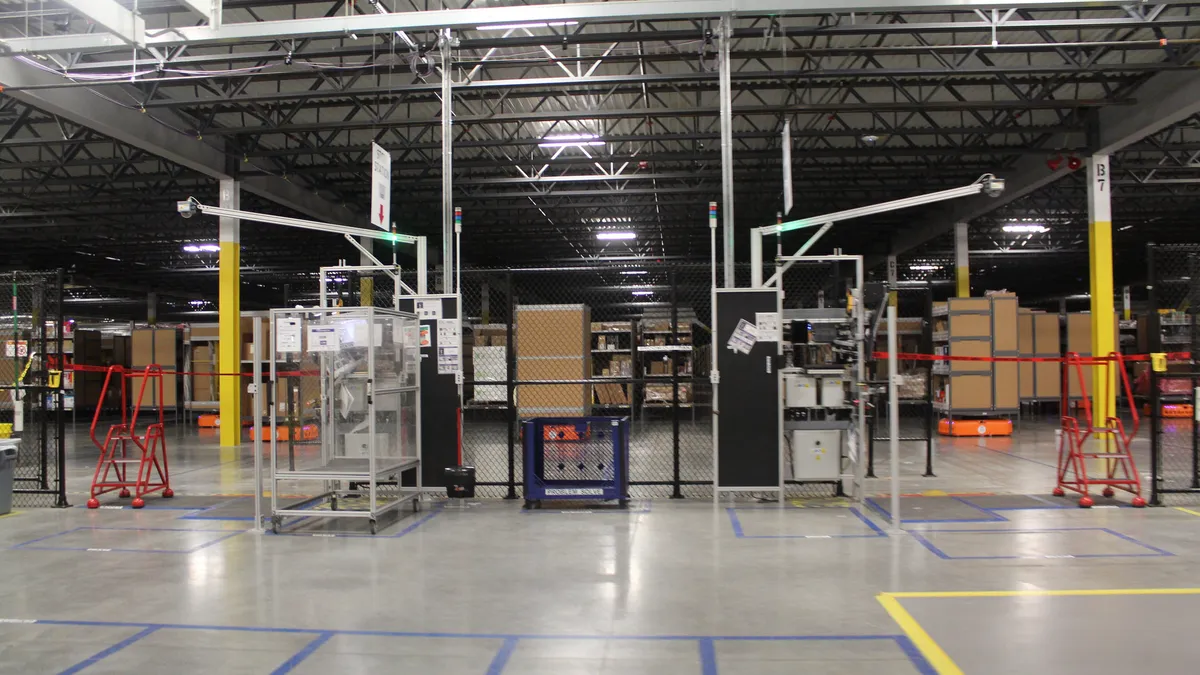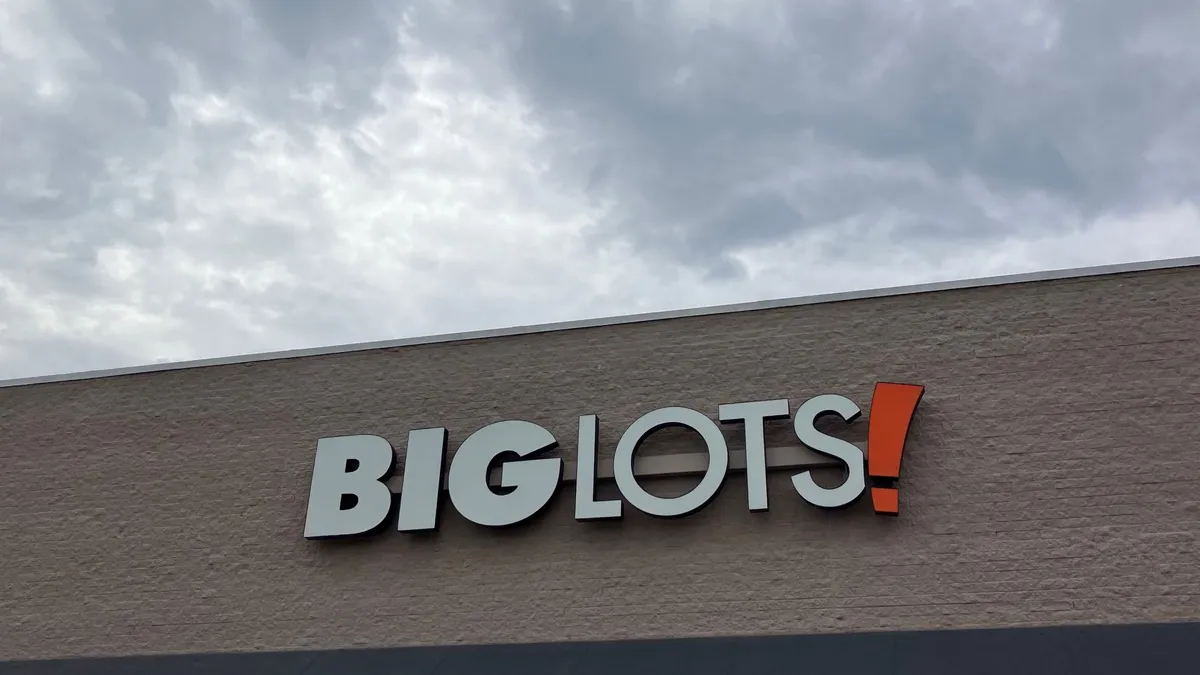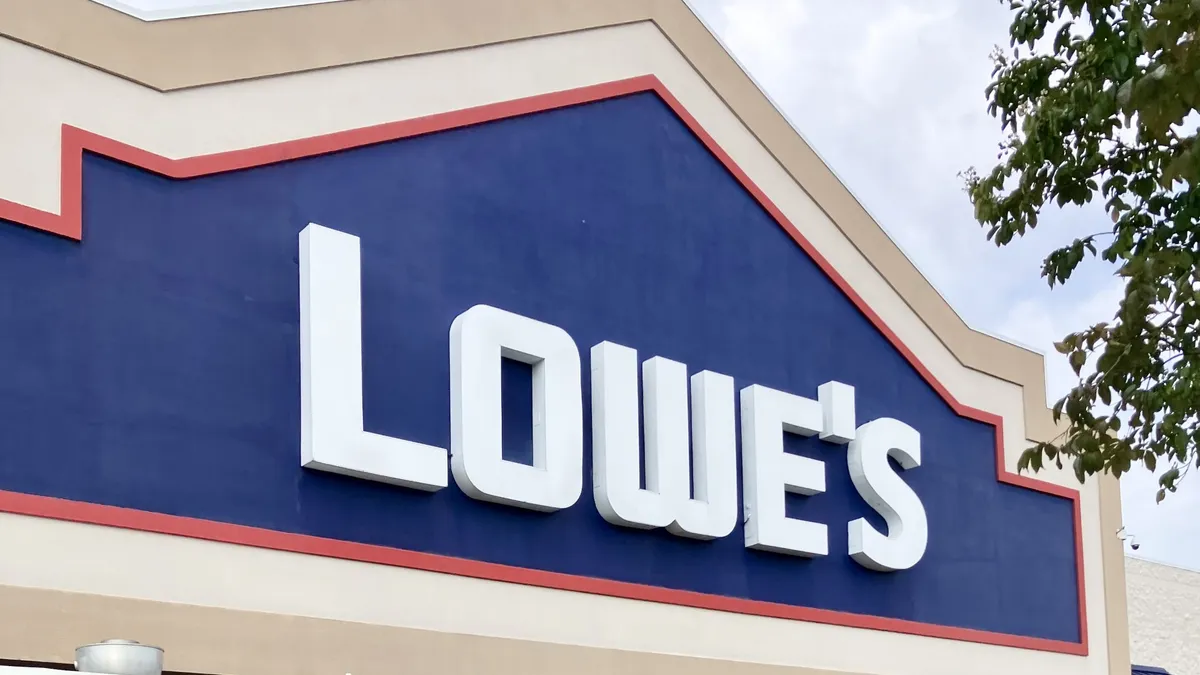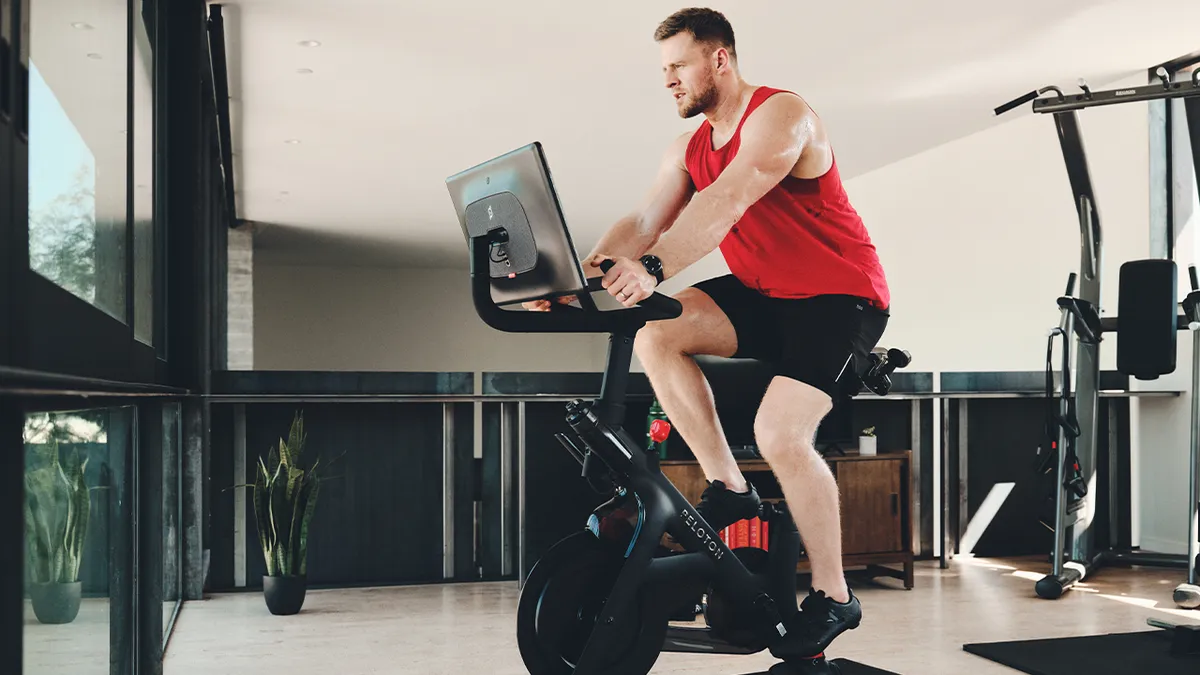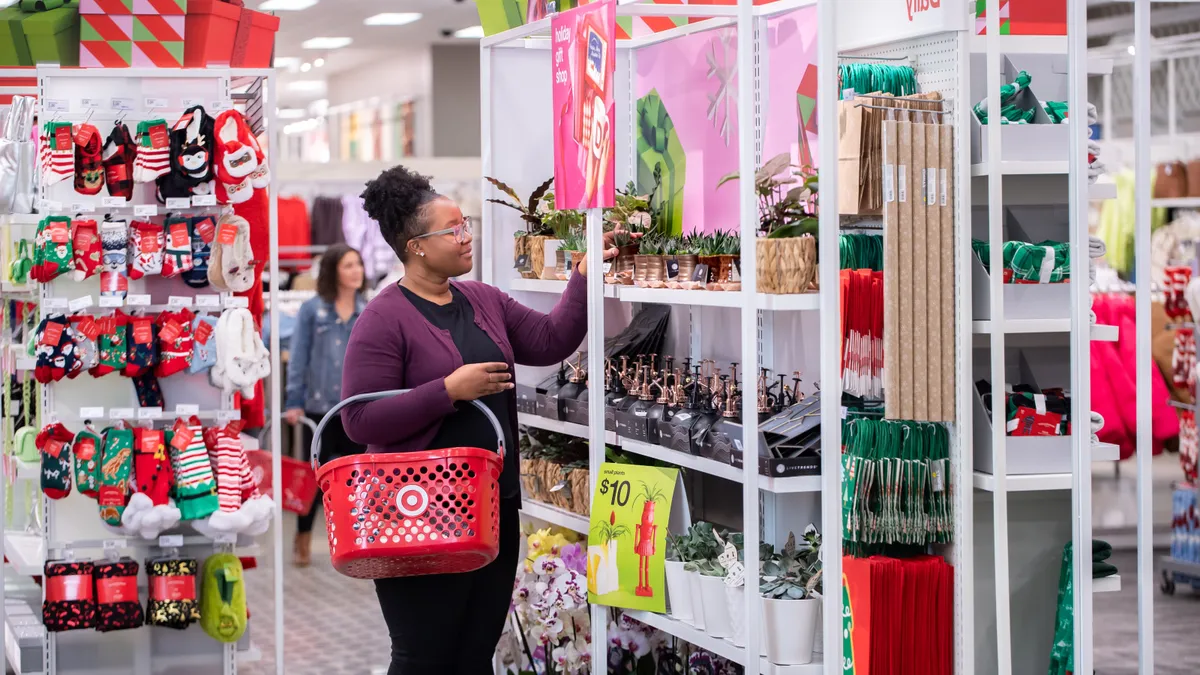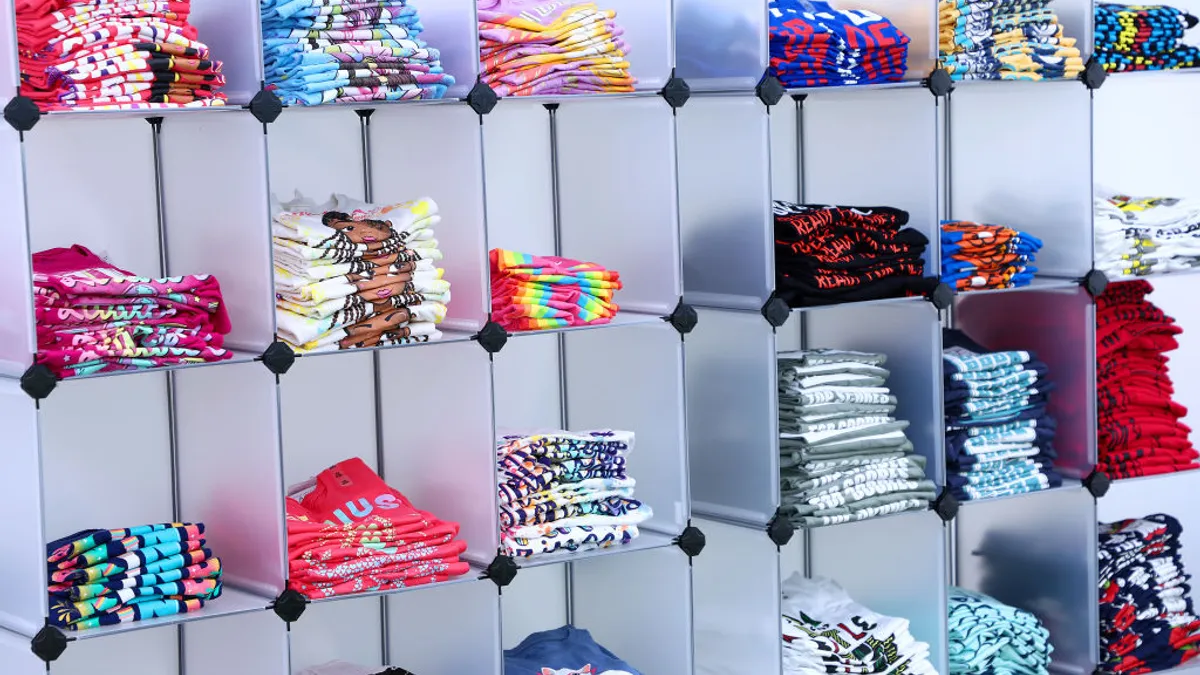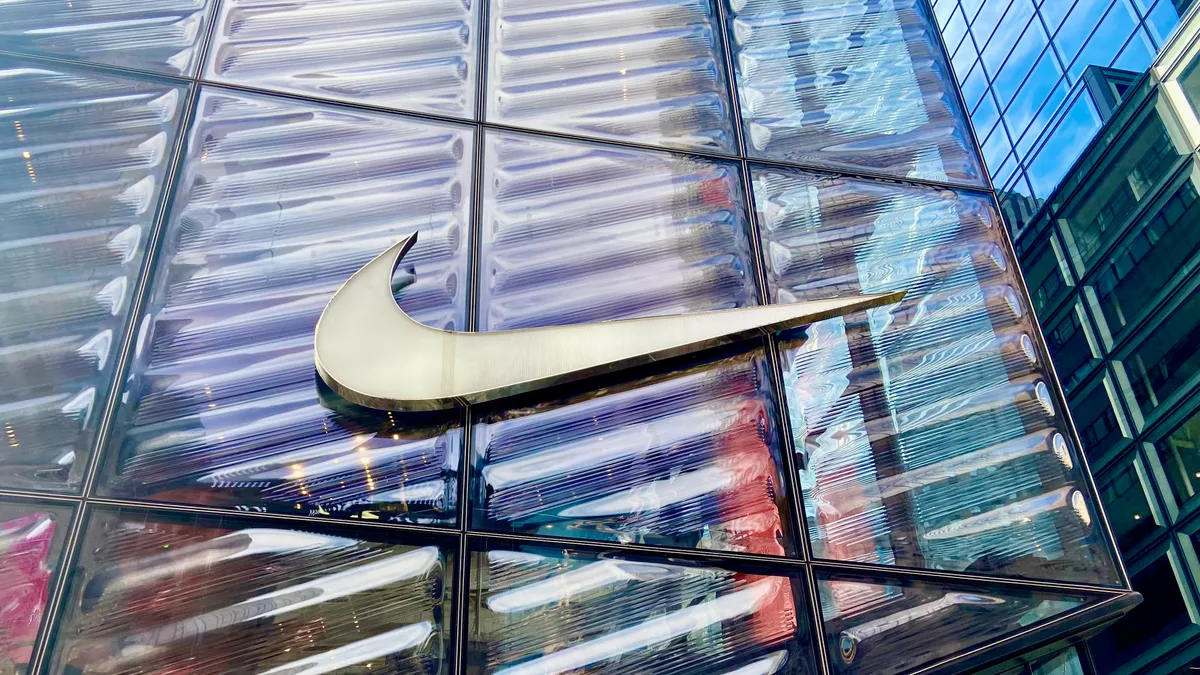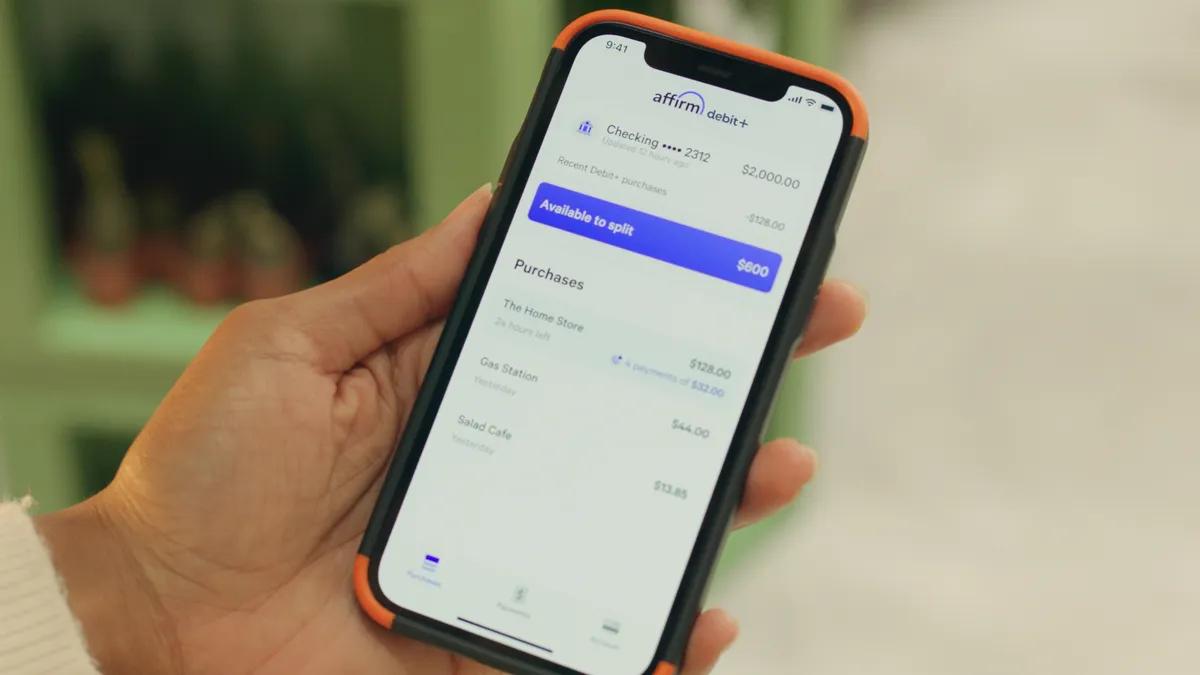Pepper is hanging his head in shame — and it’s all my fault.
Well, maybe not all my fault. It’s oppressively loud here in the NRF Big Show 2017 exhibitor hall, which explains why Pepper — a four-foot-tall humanoid robot capable of recognizing and responding to human emotions — is struggling so mightily to hear my responses to his questions about which style of shoe I might be interested in purchasing. So a sheepish, apologetic Pepper keeps asking, and I keep answering, before he finally slumps in defeat. Disappointment and humiliation seem to fill his absurdly oversized, anime-like eyes.
And what’s even crazier, I feel something like genuine compassion for his plight.
This kind of interaction is essential to what Pepper’s all about. Developed by SoftBank Robotics (formerly Aldebaran, which was acquired by Japanese communications giant SoftBank Group in 2013 for $100 million), Pepper was designed to scan vocal inflections, facial expressions, physical movements and word choice to interpret emotions and respond accordingly, delivering context-appropriate responses and suggestions pre-programmed by its owner. Pepper’s responses aren’t limited to verbal repartee, however: Its eyes change color, its arms gesture and its tone of voice fluctuates according to its read of the situation at hand. Retailers and other business who welcome Pepper into their physical locations can leverage its interactions with consumers to capture real-time data including the number of sessions, duration of engagement and customer demographics.
"[Pepper is] going to allow store personnel to function on higher-order, more meaningful interactions with their shoppers, as well as store operations, because the lower-level, more repetitive things can be addressed with this technology."

Steve Carlin
SoftBank Robotics’ general manager
SoftBank robots are now deployed in more than 70 countries: Here in the U.S., Pepper is found in California malls owned and operated by Westfield Corporation, and is debuting this month at the Oakland Airport to entice thirsty travelers to visit HMSHost-owned Pyramid Taproom. The Ave, a custom print apparel shop located on the third floor of the University of Southern California’s campus bookstore, credits Pepper with driving a 98% increase in customer interactions, a 20% boost in foot traffic and a 3x revenue hike.
Moments after my aborted NRF show interaction with Pepper, I met with Steve Carlin, SoftBank Robotics’ general manager. That dialogue went far more smoothly, and no one’s feelings were hurt. Our conversation has been lightly edited for clarity.
RETAIL DIVE: You first unveiled Pepper in Japan in mid-2014. Where are you at in terms of deployments and partnerships?
CARLIN: In the U.S. we have a deployment at Westfield Malls in the Bay Area. There’s three at their Market St. [San Francisco] location, then two down in Santa Clara. Now we’re seeking other [proof-of-concept]-style clients. It’s not truly proof of concept, but in terms of the North American market, it kinda is. We’re getting a lot of really good feedback, and finding the players that want to work with us and play with us.
Westfield wanted [Pepper] in for holiday, and Black Friday in particular. We’ve been very, very pleased with the type of response they’ve been getting. They’ve gotten between 300 and 500 interactions per robot per day, with a dwell time in the neighborhood of 2.5 minutes per person. My background was classic packaged goods — [Proctor & Gamble], Energizer. I was the guy buying those endcaps. We used to say that five seconds from five feet was about as good as you could do, so Pepper’s blowing that away.
It makes sense. That’s how Pepper was designed. Literally: Its form factor was designed to have that engagement. It delivers in spades.
Pepper is so much more lifelike than I anticipated. It was struggling to understand me and to hear me. At one point, it hung its head, and I actually felt a pang of…
CARLIN: (laughs) Empathy?
Yeah. I don’t know how common that reaction is. What went into the development process to create an experience that is so lifelike, yet so obviously new and unique?
When we first started, we had a robot called NAO. It was about 39 centimeters tall. It’s miniature, but it’s a humanoid form and can walk and what-have-you. When [SoftBank founder and CEO] Masayoshi Son decided he was ready to partake in his vision of getting a robot into everybody’s home, he scoured the globe to find the right robotics company, and the one that resonated with him was Aldebaran, which is now SoftBank Robotics. He had them make Pepper — it was specifically designed to be in SoftBank Mobility stores. What they inherently understood about the shopping experience is that engagement’s everything.
So to your question, everything about its design, its height — being approachable, not off-putting — to its face being lifelike, with expressions because of the LEDs, but not too human-like, because that gets a little odd, to the tablet being a way for two-way interaction to its arms gesticulating and communicating, because that’s how we do it… [SoftBank’s engineers] have done an amazing job of creating a real presence in technology that you tend to not get otherwise. You felt a pang of guilt or regret, but you also felt there was something in front of you. Your kinesthetic sense was kicked off. That’s not true of the desktop-based software or hardware we’re used to interacting with, Google or [Amazon’s] Alexa notwithstanding. The brilliance of the design or the form factor is creating that engagement in a meaningful way, to really deliver a message.
When you mentioned Pepper’s height, it occurred to me that given his size, his voice and his exuberance, there’s a very strong childlike dimension at work. As it relates to my own response, I don’t have a problem offending adults, but I don’t want to offend a child — and here’s this small, oddly vulnerable creature in this frenetic environment, and I felt for him. Was making Pepper childlike another conscious design decision?
CARLIN: I think the childlike quality is probably more serendipity, or happy circumstance.
Or maybe I’m projecting. It seems logical that different people are projecting different things onto this tabula rasa.
CARLIN: (laughs) Which is absolutely possible. As far as the size, there are some physics involved. The taller it is, the higher the center of gravity, which increases the likelihood of it tipping over. You have to find that happy balance. But through happy circumstance, it lends a childlike quality when combined with the other features. That works to our favor. But I wouldn’t say that was the design choice. But that intimidation factor is a key piece. By keeping it four feet tall, yes, it doesn’t tip over very easily, but it also doesn’t create something that kids would be frightened of. Especially when you want to put it in retail, or hospitality.
Are these interactions driving sales? Or is Pepper more of a novelty at this stage?
CARLIN: One of the early partners was Nestlé. They have it in the Japanese market Nescafé stores-within-stores. Before Pepper, they had a kiosk. You’re probably familiar with how many people use kiosks. It’s quite low. So they put Pepper in front of their store-within-a-store. The kiosk was getting something like one or two uses a week, and Pepper started getting triple-digit uses a day. Their sales increased double digits as well.
[Pepper] was saying, ‘Hey, come on over. Are you a coffee drinker? Yes?’ It was a simple decision tree. ‘How many people are in your house? OK, what kinds of coffee do you like?’ And it would output with, ‘Then the coffee maker for you is…’ It was pretty simple. But because of its form factor, and because it could interact in a two-way manner, it was allowing that decision tree to play out in a way that a kiosk certainly couldn’t do and that an endcap would never be able to do.
You can extrapolate out, then — not only can Pepper walk you through a decision tree, but also calculate how many people walked by, how many people engaged, and how long they engaged for. And then, because we have emotional software built in, it can gauge your facial expression to get a sense of whether you were happy, were you not happy, so now you can start to gradiate those impressions.
A chunk of this morning’s opening keynote addressed the changing role of store associates. One executive said it’s not just about learning and memorizing as a store associate — it’s about applying knowledge. That’s much easier said than done. But if you have a pre-programmed humanoid robot that can not only sell things, but offer additional customer insight or whatever the customer is looking for, in theory you can provide something that even the most experienced, most attuned human associate is never going to deliver. Is that the end game — that Pepper becomes this all-encompassing in-store information resource?
CARLIN: The first thing we talk about with our retail partners is the shopper issue they’re trying to address. Start there. Then we can start to decide how the technology delivers against that issue.
Carrefour, who we’re working with in Europe, is saying, ‘Listen, my labor cost is a huge piece of what I’m trying to do and I need to be choiceful about where I can put my labor and choiceful about where I’m not going to put my labor, so let’s put this [Pepper] technology in those areas to address that shortfall.’ So in books and magazines as a recommendation engine, or in the wine section as a recommendation engine, or at the end of the deli aisle giving you recipe ideas. That’s how that retailer chose to address the shopper needs they were aware of.
It all depends on the client, and how they want to use the technology. It’s hardware and it’s software, and it’s got an amazing form factor that allows for interactions that typical hardware and software would never be able to. It’s going to allow store personnel to function on higher-order, more meaningful interactions with their shoppers, as well as store operations, because the lower-level, more repetitive things can be addressed with this technology.
What is the more immediate future for Pepper? And for you guys as an organization?
CARLIN: We are launched in North America, so the next 12 months is really about continuing to prove out the use cases and delivering on those key performance indicators that either the brand or the retailer is asking for, then expanding once we do. We have a lot of faith in what the technology can do, and we really feel like the retailers will be happy with it once we put it in there. We’re finding some key partners — Westfield is the first good example of that — and we’re going to be able to point to that and say, ‘We’ve proven that it works. Now let’s really expand.’
What kind of investment are retailers looking at if they choose to adopt Pepper?
CARLIN: We’re announcing for the first time a package of software and hardware that we’re offering here. For $100,000 minimum spend, we’re gonna offer up four robots — we think two within a setting is key, so two per location potentially, along with a three-year, swap-model warranty, meaning if something doesn’t quite work, we’ll just swap it out, to minimize downtime to the retailer.
Do you have teams that not only help implement the technology, but also help contextualize it — to help retailers most effectively install Pepper in a way that addresses their pain points?
CARLIN: As I mentioned, I started in the consumer packaged goods industry, so I have a very strong understanding of how retail works, and what the pain points are. Then I made certain that my team had that same skill set. We start there. When we understand the needs and issues, we understand how to position the solution a little better. We don’t want to go into a setting and say, ‘We’re a robotics company, and we think it will work in x, y and z. You just need to listen to us.’ But we have legitimate history and understanding, and we try to go in there and say, ‘Listen, we know what works, and the first thing that always works is start with the issue you’re trying to address.’
One last question. It’s a white robot. Why is it called ‘Pepper’?
CARLIN: (laughs) The less interesting answer is that it’s a word that doesn’t change meaning in different languages. That’s one key thing as you’re naming a product. It’s a relatively simple thing to say as well. And it can be either masculine or feminine. The ultimate goal will be to get it into people’s homes, and we want it to be a part of your family. You’re going to decide whether it should be male or female based on your family needs.
What personal pronoun do you use? ‘He,’ ‘she’ or ‘it’?
CARLIN: I alternate. It depends. If you call it ‘she,’ then I’ll call it ‘she.’ If you call it ‘he,’ then I’ll call it ‘he.’ It’s whatever you feel like.


